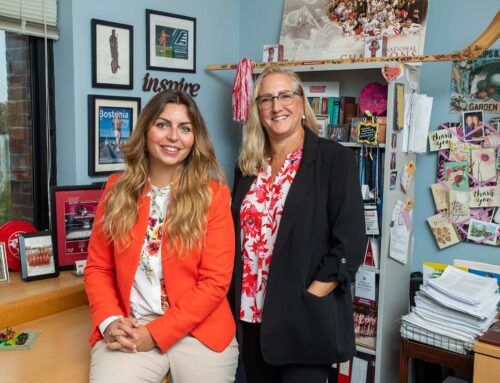This article was originally featured on HealthyPlace.com
Family-based therapy for eating disorders is one of the most productive forms of treatment for adolescents, particularly those with anorexia nervosa, as well as various forms of bulimia nervosa, binge eating disorder and extremely picky eating.
A 2014 study from the Stanford University School of Medicine found family-based therapy approaches were twice as effective as individual therapy for adolescents with anorexia. Additionally, a randomized 2010 clinical trial revealed approximately half of teens treated with family-based therapy met the criteria for full recovery after a year, compared to 23 percent of teens undergoing standard treatment.
Inclusion of the family – parents and siblings alike – helps support an entire system rebalance in the wake of an eating disorder and leads to improved long-term outcomes.
Here are five critical components for making the most of family-based treatment for eating disorders:
Family-Based Therapy Part 1: Parents Taking Charge
During the first phase of family-based therapy for eating disorders, weight restoration, parents take temporary ownership of their child’s nutritional decisions. Parents need to know how to coach and support their child through a difficult moment at or beyond the dinner table and learn by doing and reviewing. It can often be stressful for parents, but a calm and consistent style is key for moving forward.
Family-Based Therapy Part 2: There Is No Blame for Eating Disorders
Family-based therapy for eating disorders frees parents from blame. There’s no place for the “what ifs” of the past, which can often elicit shame and guilt, and serve as counterproductive barriers to moving forward in recovery.
Family-Based Therapy Part 3: Focus on the Now
Here’s the deal: time-traveling isn’t real. It’s certainly an alluring concept that can take our minds to wishful or even unpleasant places, for hours at time. Yet family-based treatment for eating disorders is about the entire family accepting what is in front of them today, without traveling to the past or wishing things were different. Focus on the helpful changes to be made at this exact moment in time.
Family-Based Therapy Part 4: No One Chooses to Have an Eating Disorder
Family-based therapy for eating disorders really works. Do you know the five critical parts to family-based treatment for eating disorders?Despite moments of appearing to cling to a destructive relationship with the illness, I have not met anyone who ultimately chose to suffer. A wide range of research suggests strong genetic and biological underpinnings to eating disorders. Have you ever met anyone who had the opportunity to choose her or his own genetic make-up? More often, what we see is fatigue and helplessness masquerading as an affinity to the illness. It is hard to fight your brain 24/7, which is precisely why families become such an important asset in building an invaluable support system.
Family-Based Therapy Part 5: Everyone in the Family Has a Role in Eating Disorder Recovery
Family-based treatment for eating disorders isn’t just about the parents providing and coaching through nourishment. Siblings can play a major source of emotional support and distraction. This “division of labor” allows the family to work effectively as a team.
Using these approaches, combined with the guidance of an expert treatment team, it is remarkable to see what families can truly accomplish on the road to a long-lasting eating disorder recovery.
Renee Bazinet Nelson, Psy.D, is Walden’s director of adolescent services. She has comprehensive responsibility for adolescent intensive outpatient programs including oversight of all ambulatory clinics, new program development, program staffing, selection and supervision of staff, budgeting and compliance with all organizational and regulatory agency standards. Formerly, she served as assistant director of Walden’s Worcester clinic.






